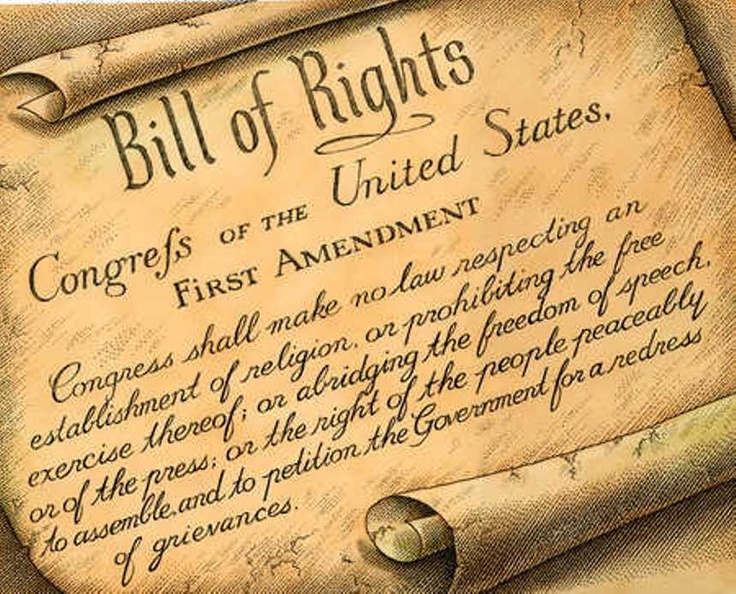The Founding Fathers started with freedoms
This foundational document has been supported by americans for over 225 years.
The First Amendment of the United States’ Constitution is one of the most fundamental guidelines to be established. It is believed to be a key principle of democracy and the law of the land.
The First Amendment was adopted with the rest of the Bill of Rights in 1791, a few years after the end of the American Revolutionary War. It was brought up because of America’s inception, when citizens were tired of their treatment by the British—over taxation, censorship, and lack of basic rights. Therefore, the citizens demanded a guarantee of their basic freedoms, such as freedom of speech, press, religion, assembly, and petition. This allowed the citizens to limit the government’s power and speak out for change, as an individual or as a group. It has allowed them to express their opinions and study their own religion without fear of the government.
As written on the very document by James Madison, “Congress shall make no law respecting an establishment of religion, or prohibiting the free exercise thereof; or abridging the freedom of speech, or of the press; or the right of the people peaceably to assemble, and to petition the Government for a redress of grievances.” In other words, it is meant to allow people to voice and publish their opinions publicly without the government stopping them.
The First Amendment continues to be interpreted and disputed. Limiting speech is considered an attempt to limit thought, but, when does Freedom of Speech turn into harm? Over the past 229 years after ratification, there have been countless court cases concerning this famous amendment. One case after the other, laws have been placed to define the limits of these freedoms. These limitations have evolved throughout American history and still continue today. For example, due to the changing conditions of advancing technology, it is harder to monitor expressions and consider Freedom of Speech. Laws had to be placed to protect people, especially children, from inappropriate content shared on the Internet.
The United States’ First Amendment has proved to be a blessing, whether it’s from peaceful protests to the innovating social and economic developments. Over the summer, protests on a range of subjects have been accepted because of the First Amendment, but challenges have erupted when one group’s freedoms and messages conflict with those of other groups. The basic idea, though, is that all sides can be shared equally, allowing for an informed and educated public.
